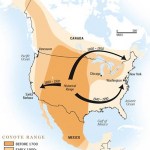infectious disease
I know summer is winding down, but there's still plenty of beach time left and some great books to take along with you. Two giants in the field have recently released memoirs of their respective fights against infectious diseases: William Foege's House on Fire: The Fight to Eradicate Smallpox and Peter Piot's No Time to Lose: A Life in Pursuit of Deadly Viruses.
I'll begin with William Foege. Foege is a native Iowan, an Epidemic Intelligence Service alum, and former director of the Centers for Disease Control and Prevention. His book, as the title suggests, focuses on his role in the fight…
This is the last of 16 student posts, guest-authored by Jessica Waters.
Climatologists have been warning us about the ongoing and impending consequences of global warming for years. But the results of climate change affect more than just polar bears and penguins - if you live anywhere in the northeastern, north-central or west coast states of the U.S.., you could be at a greater risk for contracting Lyme Disease.
Lyme disease is an infection of the Borrelia burgdorferi bacterium that is spread through black legged ticks (otherwise known as deer ticks) who feed on the…
This is the fifteenth of 16 student posts, guest-authored by Cassie Klostermann.
One of the major accomplishments that public health professionals pride themselves in is the reduction of people getting sick or dying from preventable infectious diseases. Unfortunately, these debilitating, historic diseases that health professionals had once thought they had under control are starting to rear their ugly heads once again in the United States (U.S.). One of these diseases that I am referring to is measles. Measles is a highly contagious virus (from the genus Morbillivirus) spread…
This is the fourteenth of 16 student posts, guest-authored by Caroline Rauschendorfer.
Cryptosporidiosis, known more commonly as crypto, is a gastrointestinal (GI) disease caused by parasites of the Cryptosporidium genus. If infected with crypto you may experience diarrhea, nausea, vomiting, fever, and abdominal cramps that can last up to two weeks. Definitely something you want to avoid, if possible, but at least it usually resolves on its own without medical intervention and is rarely fatal in otherwise healthy individuals. [3]
The most common disease causing organisms for…
This is the thirteenth of 16 student posts, guest-authored by Jessica Ludvik.
One Disease, Many Species
Brucellosis, more commonly known as undulant fever in humans or bangs disease in cattle, is one of the oldest bacterial scourges of livestock-producing nations, especially those in which the animals live in close proximity with the human population. The disease is caused by bacteria of the genus Brucella. Within this category are many species of bacteria, each almost exclusive to a particular animal species. A few of the most common seen in veterinary and human…
This is the twelfth of 16 student posts, guest-authored by Stanley Corbin.
Disease in wildlife is an important concern to the health and safety of humans and domestic animals. The expanding growth of our nation and resultant land use changes with urbanization has resulted in a shrinking habitat and fragmentation for all animals, including humans. The effects of ecological disruption are universally recognized and adversely effects wildlife through multiple mechanisms.
Hand it to the coyote (Canis latrans) for its ability to exist with humans. The resilience of this animal can be…
This is the eleventh of 16 student posts, guest-authored by Ilze Berzins.
When one hears the words “food-borne illness”, what comes to mind? For me, I think of a medium rare, pink, juicy hamburger, or something like potato salad that may be made with mayonnaise containing raw eggs, or maybe a fresh green garden salad sprinkled with sprouts. I am sure we have all heard about outbreaks or recalls surrounding these familiar dishes. And the usual suspects contaminating these food stuffs are often bacteria with familiar names such as E.coli or Salmonella. …
This is the tenth of 16 student posts, guest-authored by Jean DeNapoli.
I own a small back yard flock of sheep and lambing season is the most exciting and rewarding time of the year. Nothing is more enjoyable than watching a lamb who takes a few wobbly steps and nurses for the first time as her mother nickers encouragement. Within a day, the lamb will be playing, bucking, running, and exploring her world.
Despite the pastoral wonders of the season, lambing is also inherently stressful. I must constantly check the barn to monitor for birthing problems and help out…
This is the eighth of 16 student posts, guest-authored by Michelle Formanek.
For many of us in the scientific world, particularly budding infectious disease epidemiologists like myself, the Plague (or, more dramatically, the “Black Death”) is a prime example of the rapid and devastating spread of an infectious disease. So devastating, in fact, that it wiped out nearly one-third of the population in Europe in the mid-1300’s. That’s roughly equal to 25 million people. It then persisted and has caused various outbreaks throughout history, most notably the Great Plague of London in…
This is the seventh of 16 student posts, guest-authored by Joshua Pikora.
Recently an article published in PLoS Neglected Tropical Diseases titled Chagas Disease: “The New HIV/AIDS of the Americas” caused a stir in the media receiving coverage through Fox News and The New York Times among others. This article, as the title indicates, claims that Chagas disease is the new AIDS of the Americas and likens the current situation of Chagas disease to that of the first two decades of the AIDS epidemic, but is that truly the case1? The argument that I gained from the article is that…
This is the sixth of 16 student posts, guest-authored by Anna Lyons-Nace.
Natural…unprocessed…raw. These terms are often used by consumers, nutritionists and health experts to denote the most healthful, high-quality food options available for consumption. However, when pertaining to the recent increasing trend in raw milk consumption, can consumers be confident that they are choosing the safest and most healthful option? Statistical data and health studies would suggest otherwise.
Before we delve into the discussion any further, we should first establish what is…
This is the fifth of 16 student posts, guest-authored by E. Jane Kelley.
Did you know that some dogs might have a tapeworm in their small intestine that can cause the development of large cysts in people’s livers, lungs, and brains? This is not very common in the United States currently, though there are cases reported periodically (2), but in some areas of the world it is a huge problem. An infection that can spread from animals to humans or vice-versa is called a zoonotic infection.
The tapeworm is called Echinococcus granulosus and the cystic disease it causes is called hydatid…
This is the fourth of 16 student posts, guest-authored by Eric Wika.
Let's face it, it's a dangerous world to be a brain. The brain is so soft and squishy it cannot even support its own weight. That's right, even gravity itself is enough to take out an unprotected brain. Besides these passive threats, there are several factions out there that active try to damage your brain! Zombies are an ever present menace which wish to eat our brains. TV will rot our brains, drugs will fry our brains and bullies will offer to “beat your brains in”. It's no wonder mother nature had to come up with the…
This is the third of 16 student posts, guest-authored by Mary Egan.
Murine typhus has been in the news recently in Austin, TX, where in May of this year, two people were found to be positive and one died. This rings a number of alarm bells for me, since I live in Texas, and specifically in Austin. I know of another Austin veterinarian who got sick with murine typhus in 2008, when it was first noticed in Austin and investigated by the CDC. I was also working as a relief vet at the Town Lake Animal Center, the municipal shelter, and at the Austin Humane Society, the main…
This is the second of 16 student posts, guest-authored by Eileen Ball.
The beauty of dogs and cats as companions is that we don’t have to raise them to go out into the world and be successful. As pet parents we can set the household “rules” according to what works for us and get on with enjoying our pets; hopefully for many years. According 2011-2012 APPA National Pet Owners Survey cats have now surpassed dogs as the most common household pets in the United States. Despite this fact the same survey reports that in 2010 only 30% of US veterinary patients were…
This is the first of 16 student posts, guest-authored by Riva Ben-Ezra.
Acai fruit comes from the Brazilian Amazon forests and is one of the main dietary staples of the native population. It has been touted as having potent antioxidant properties 1,2 as well as being a stimulant for weight loss3, a cancer cure and an anti-aging miracle drug. Whether these claims are true or not remains to be seen4,5; however the FDA has clamped down on Acai products claiming to perform health benefits without classifying themselves as drugs (see here, here and here).
Something that the FDA has not…
The ecology of antibiotic resistance on farms is complicated. Animals receive antibiotic doses in their food and water, for reasons of growth promotion, disease prophylaxis, and treatment. Other chemicals in the environment, such as cleaning products or antimicrobial metals in the feed, may also act as drivers of antibiotic resistance. Antibiotic-resistant organisms may also be present in the environment already, from the air, soil, or manure pits within or near the barns. Ecologically, it's a mess and makes it more difficult to attribute the evolution and spread of resistance to one…
The emergence of "new" diseases is a complicated issue. "New" diseases often just means "new to biomedical science." Viruses like Ebola and HIV were certainly circulating in Africa in animal reservoirs for decades, and probably millenia, before they came to the attention of physicians via human infections. Hantavirus in the American southwest has likely infected many people, causing pneumonia of unknown origin, before the Four Corners outbreak led to the eventual identification of the Sin Nombre virus. Encroachment of humans into new areas can bring them into contact with novel infectious…
I mentioned last month that we are planning an Emerging Diseases conference here in April. Things are moving quickly and registration is now open (here). Abstract submission is also up and running here.
The details:
Oral and poster presentation research abstracts are due by 5:00pm on March 23, 2012. Individuals may submit up to two research abstracts. Abstracts must not exceed 250 words in length. There are a limited number of spots available for those interested in providing a 15-minute oral presentation. Abstracts submitted for oral presentations that are not selected for a talk will…
Typically when we think of flying things and influenza viruses, the first images that come to mind are wild waterfowl. Waterbirds are reservoirs for an enormous diversity of influenza viruses, and are the ultimate origin of all known flu viruses. In birds, the virus replicates in the intestinal tract, and can be spread to other animals (including humans) via fecal material.
However, a new paper expands a chapter on another family of flying animals within the influenza story: bats.
I've written previously about the enormous diversity of microbes that bats possess. This shouldn't be…


